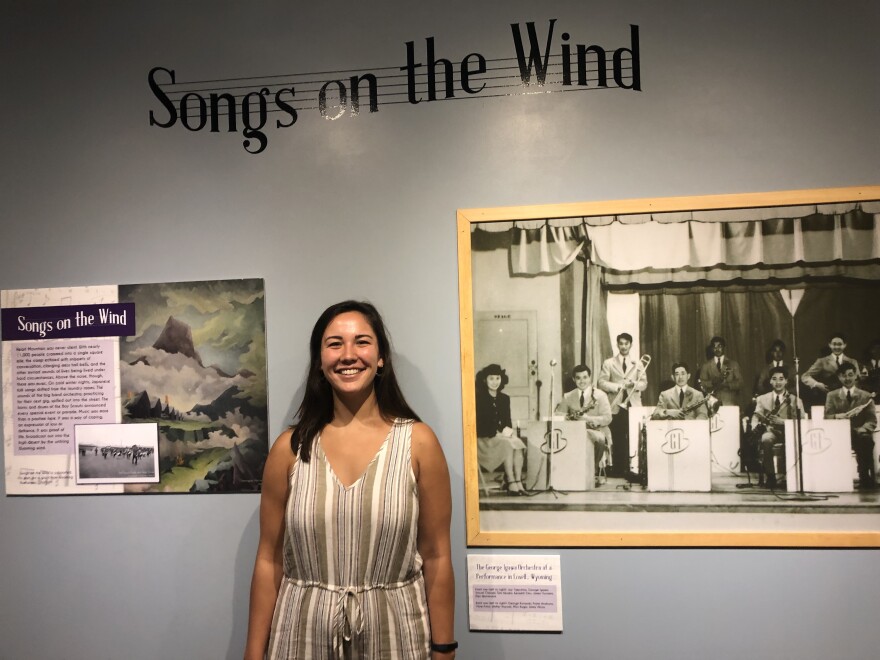The Heart Mountain Interpretive Center focuses on remembering the injustices Japanese-Americans faced during World War II. But the current special exhibition at Heart Mountain wants to remember how some of the nearly 11,000 incarcerees tried to find normal lives through music at the camp.
Joy Takeshita Teraoka was a singer in the George Igawa Orchestra, a band of Japanese-American incarcerees at Heart Mountain during World War II.
"That's the thing about the Japanese in those relocation camps. They didn't sit around and mop as a whole. They got up and made something more positive, as positive as it could be," recalled Teroaka in the film, "For Joy," by Julian Saporiti.
Teraoka was just 15 when Japanese-Americans were evacuated from their homes in 1942 and sent to internment camps. When she arrived at Heart Mountain, she decided she would audition to be a singer for the orchestra. And she got the part.
"It was a thrill and honor because if we were back home in Los Angeles the opportunity would have never come to me," Teraoka said in the film.
Teroaka found joy in her experience of performing music at Heart Mountain. But this was something that co-curator Julian Saporiti struggled with: how could such a horrific experience lead to something positive?
"The fact that she got up on stage and sang to me is a pretty incredible thing," said Saporiti. "Once you zoom out from that song, and you go outside the mess hall and you know how cold it is in Wyoming or how dusty it is during the summer and you keep zooming out past the barb wire and the guards."

The efforts of trying to lead a normal life while being imprisoned is what the center's special exhibit, Songs on the Wind, hopes to portray.
"What it was like to be 15 or 16 years old and have that reprieve from the Wyoming winter and the barb wire, the searchlights and go dancing in a barrack or a mess hall."
As Saporiti and his co-curator Erin Aoyama did more research, Aoyama said they found out that the bands that formed at Heart Mountain didn't only perform in the camp.
"Even though these Japanese-Americans were incarcerated, weren't really able to leave camp or leave freely, they did leave to go play at a prom in Thermopolis and a Mormon dance in Lovell," said Aoyama.
It turns out they played all over Northwest Wyoming. Aoyama said even though it was wartime Wyomingites still wanted live music and wanted to dance.
"This band was also goodwill ambassadors…reintroducing or introducing for the first time Japanese-American faces to some of these places."
Aoyama said according to clips in newspapers, people really enjoyed the band. They even got standing ovations. The band played popular music of the time like Glenn Miller and Tommy Dorsey, but they also played traditional Japanese music.
"The origins of the band rest with this man named George Igawah who before the war was a tenor saxophone player in Los Angeles."
When Igawah was rounded up and taken to the camp, he, like every other Japanese American, could only bring what they could carry. Igawah brought his trombone. And then he went looking for others who made the same choice as him.
"…[Those who] chose to bring an instrument, [who] chose to bring a trombone, a guitar or violin or a saxophone, so he found these guys and formed a band."
These musicians were trying to make the best of a desperate situation. To Julian Saporiti, the most natural way to tell the story was through a song.
"I think for Joy and these musicians who I'm trying to tell a story of was to write this song, The Best Goddamn Song in Wyoming, which is verbatim what I've been told or I dug through camp newspapers, and it can reach a heck a lot more people," said Saporiti.







